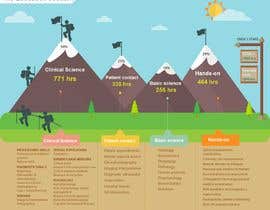Daily Practices That Lead To Pain In The Back And Methods For Avoidance
Daily Practices That Lead To Pain In The Back And Methods For Avoidance
Blog Article
Content Produce By-Hermansen Landry
Keeping proper posture and staying clear of common risks in daily activities can dramatically influence your back health. From how you rest at your desk to how you raise hefty items, tiny changes can make a big difference. Visualize a day without the nagging pain in the back that hinders your every move; the option could be simpler than you think. By making a few tweaks to your everyday routines, you could be on your way to a pain-free presence.
Poor Position and Sedentary Lifestyle
Poor position and an inactive lifestyle are two significant contributors to back pain. When you slouch or hunch over while resting or standing, you placed unneeded strain on your back muscular tissues and spine. This can cause muscle inequalities, stress, and eventually, chronic neck and back pain. In addition, sitting for extended periods without breaks or physical activity can deteriorate your back muscle mass and lead to rigidity and discomfort.
To battle poor pose, make a conscious initiative to sit and stand straight with your shoulders back and lined up with your ears. Keep in mind to keep your feet flat on the ground and avoid crossing your legs for prolonged durations.
Incorporating routine extending and strengthening exercises right into your day-to-day routine can likewise assist enhance your posture and ease pain in the back connected with an inactive lifestyle.
Incorrect Training Techniques
Incorrect lifting techniques can significantly add to pain in the back and injuries. When mouse click the next site raise heavy objects, bear in mind to bend your knees and utilize your legs to raise, instead of counting on your back muscle mass. Stay clear of turning your body while training and maintain the object near your body to decrease stress on your back. It's crucial to preserve a straight back and avoid rounding your shoulders while lifting to avoid unnecessary stress on your spine.
Always evaluate the weight of the item before lifting it. If it's too hefty, request for assistance or usage equipment like a dolly or cart to carry it securely.
Remember to take breaks during raising tasks to provide your back muscle mass a possibility to relax and stop overexertion. By applying correct lifting methods, you can avoid pain in the back and reduce the threat of injuries, guaranteeing your back stays healthy and strong for the long term.
Absence of Routine Workout and Stretching
A sedentary lifestyle lacking routine exercise and stretching can considerably contribute to neck and back pain and discomfort. When informative post don't participate in exercise, your muscle mass become weak and inflexible, bring about bad position and raised stress on your back. Normal exercise aids reinforce the muscular tissues that sustain your spine, enhancing stability and minimizing the danger of neck and back pain. Integrating stretching right into your routine can also boost adaptability, stopping rigidity and pain in your back muscular tissues.
To avoid pain in the back triggered by an absence of exercise and stretching, aim for a minimum of thirty minutes of moderate physical activity most days of the week. Consist of exercises that target your core muscles, as a solid core can aid reduce stress on your back.
In addition, take breaks to extend and move throughout the day, particularly if you have a workdesk task. Simple stretches like touching your toes or doing shoulder rolls can assist relieve stress and protect against pain in the back. Focusing on routine exercise and stretching can go a long way in maintaining a healthy and balanced back and minimizing discomfort.
Final thought
So, remember to stay up right, lift with your legs, and remain active to prevent back pain. By making just click for source to your daily habits, you can prevent the discomfort and limitations that include pain in the back. Take care of your back and muscle mass by practicing excellent posture, proper lifting techniques, and normal exercise. Your back will certainly thank you for it!
